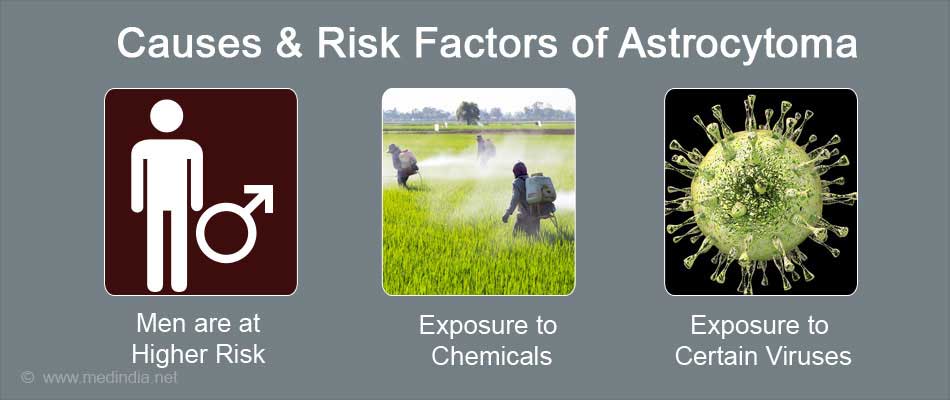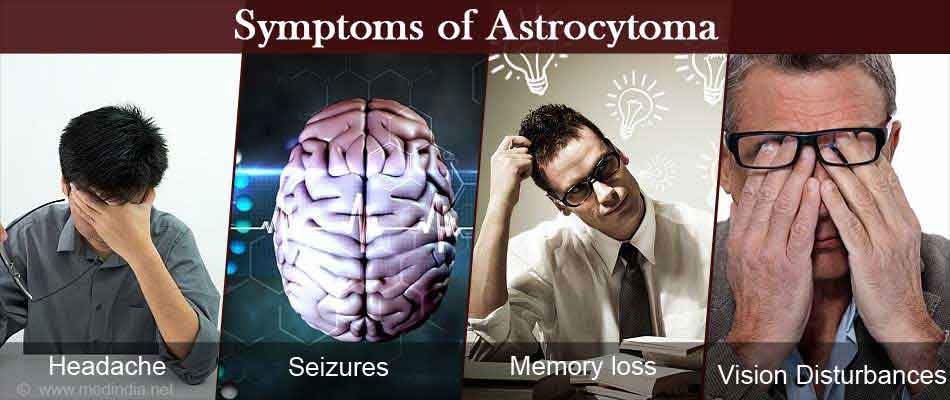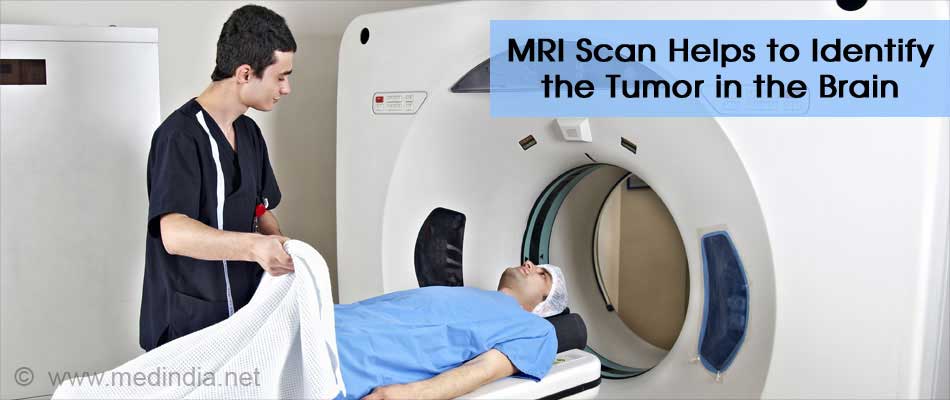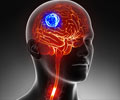- About Astrocytoma - (https://www.thebraintumourcharity.org/understanding-brain-tumours/types-of-brain-tumour-adult/astrocytoma/)
Introduction to Astrocytoma
Brain tumor is a condition characterized by the abnormal growth of cells in the brain. It may be due to a primary condition in the brain (primary tumor) or may occur due to spread of cancer cells from the other parts of the body (secondary tumor).
In India, brain tumors often affect younger age group, usually with a poor prognosis and only 3% survival. As per the National Registry of United States, brain tumors are ranked at the 10th leading causes of death affecting both men and women with a 5 year survival rate as low as 34% in men and 36% in women.
Brain tumors fall in mainly two categories:
- Gliomas
- Non-glial tumors
Astrocytoma is one of the most common brain tumors falling under the category of gliomas. They develop from the astrocytes, which are supportive cells in the cerebrum or cerebellum.
This tumor may be located in the cerebrum, cerebellum, spinal cord or the brainstem.
Clinically, astrocytomas are categorized into 4 different grades depending on their behavior. The low grade tumors (Grade 1 & 2) are slow growing and benign in nature seen often in children, while high grade tumors (Grade 3 & 4) are rapidly growing often seen in adults:
- Grade 1: Pilocytic Astrocytoma: This tumor is benign and slow growing in nature; it is more commonly seen in children and young adults under 20 years. It does not spread into the nearby tissue. Once removed, they are unlikely to recur.
- Grade 2: Low grade diffuse Astrocytoma: These are also slow growing in nature and it has chances of spreading into the nearby tissue. They may recur after surgery, and usually occur between 20 to 45 years of age.
- Grade 3: Anaplastic Astrocytoma: This tumor grows rapidly and spreads into the nearby brain tissue. They often return following initial therapy in a more aggressive fashion. These tumors are considered malignant or cancerous.
- Grade 4: Glioblastoma Multiforme: This tumor due to its highly aggressive nature spreads rapidly and usually associated with a poor prognosis.
What are the Causes and Risk Factors of Astrocytoma?
The reason behind the occurrence of astrocytomas are often uncertain; there are presently no preventive measures that could be taken to avert the development of cancer.
Genetic mutations in NF1, BRAF, PDGFR, and TP53 have been shown to result in the abnormal growths that cause this cancerous condition. Mutations in the IDH-1 gene have also been reported in many astrocytomas. There are certain risk factors that can lead to genetic mutations.
The risk factors for this condition include:
- Age – These tumors usually occur in extremities of age, though the cancer may be seen in all age groups.
- Gender - Men have a higher risk for developing brain cancer than women.
- Occupational Exposure – Exposure to some chemicals in solvents, rubber, pesticides can have a higher risk of developing the cancer.
- Family history - A family history of the brain cancer can increase the risk of cancer in the future generations of the family.
- Race and ethnicity - More cases seen in the Unites States and Northern European regions.
- Exposure to electromagnetic fields and ionizing radiations - There is no firm evidence that electromagnetic fields and ionizing radiations can cause brain tumors. However, there are anecdotal reports about such an association.
- Exposure to certain viruses - Infection with Ebstein Barr virus (EBV) increases the risk of cancerous growth such as the CNS lymphoma Other infectious agents, such as HIV has also been linked to development of cancerous growth.

What are the Symptoms of Astrocytoma?
The symptoms seen in brain tumor primarily depend on the location and size of the tumor. During the early period it may be symptomless but the most common symptoms that are seen with this condition are:
- Headaches
- Seizures
- Memory loss
- Changes in behavior
- Vision disturbances
- Difficulty in using the limbs
- Impairment of sensation
- Gait disturbances

How do you Diagnose Astrocytoma?
Proper history taking is a must to identify a brain tumor and for timely referral to the specialist the neurologist or neurosurgeon in this case. Investigations in this condition include:
- Neurological examination: The vision, hearing response, muscle strength, coordination and reflexes are examined. An eye examination is also conducted to look for changes in intra ocular pressure, a raised intra ocular pressure indicates possibility of an intra-cranial tumor.
- Imaging techniques: Computerized tomography (CT) and Magnetic resonance imaging (MRI) are techniques that help in identification and extent of tumors in the brain. Following this a body scan may be looked into to identify if other sites of the body such as liver, and lungs are involved.
A positron emission tomography (PET) scan may be undertaken to evaluate the metabolic activity of the tumor. In general, higher grade tumors are more metabolically active.

- Electroencephalogram (EEG): This test may be performed to evaluate brain activity and for follow-up if seizures are associated with the disease.
- Biopsy: During a biopsy, a sample of the tumor may be obtained for microscopic analysis of the tumor that is in area accessible for surgery but if possible resection of the entire tumor or debulking (removal of a part of the tumor) is usually carried out.
Treatment Modalities
The treatment procedure in Astrocytoma depends on the type of the condition and the grade of the tumor. Thus, we essentially have low grade tumors (Grade 1 & Grade 2) and high grade tumors (Grade 3 & Grade 4).
Low Grade Tumors
In low grade tumors i.e grades 1 and 2, surgical resection of the tumor is preferred. This may be complete or partial resection (tumor debulking). This depends on the location of the tumor and the safety of adjacent structures has to be borne in mind.
- Following a complete resection the patient needs to be followed up at regular intervals to watch out for recurrence.
- In a partial resection of the tumor, follow up with radiotherapy may be done to kill the remaining cancerous cells.
- In children, the preferred first line of treatment is chemotherapy with awatch andpolicy, as surgery may be more risky. Some tumors are known to undergo spontaneous regression.
- In some instances, a second surgery may be necessary for treating recurrence; if the tumor obstructs cerebrospinal fluid (CSF) flow, leading to hydrocephalus, a shunt operation may be needed to remove the excess fluid from the brain and divert it elsewhere.
High Grade Tumors
In high grade tumors like Grade 3 tumors, the tumors require surgical resection and radiotherapy for many weeks. Chemotherapy may be also given immediately after radiotherapy and in some cases if the condition recurs. Radiotherapy is not preferred in children less than 3 years.
In Grade 4 tumors, immediate treatment is done by tumor resection followed by radiotherapy, whilechemotherapy is administered simultaneously. In children, chemotherapy may be given initially to delay radiation treatment.











